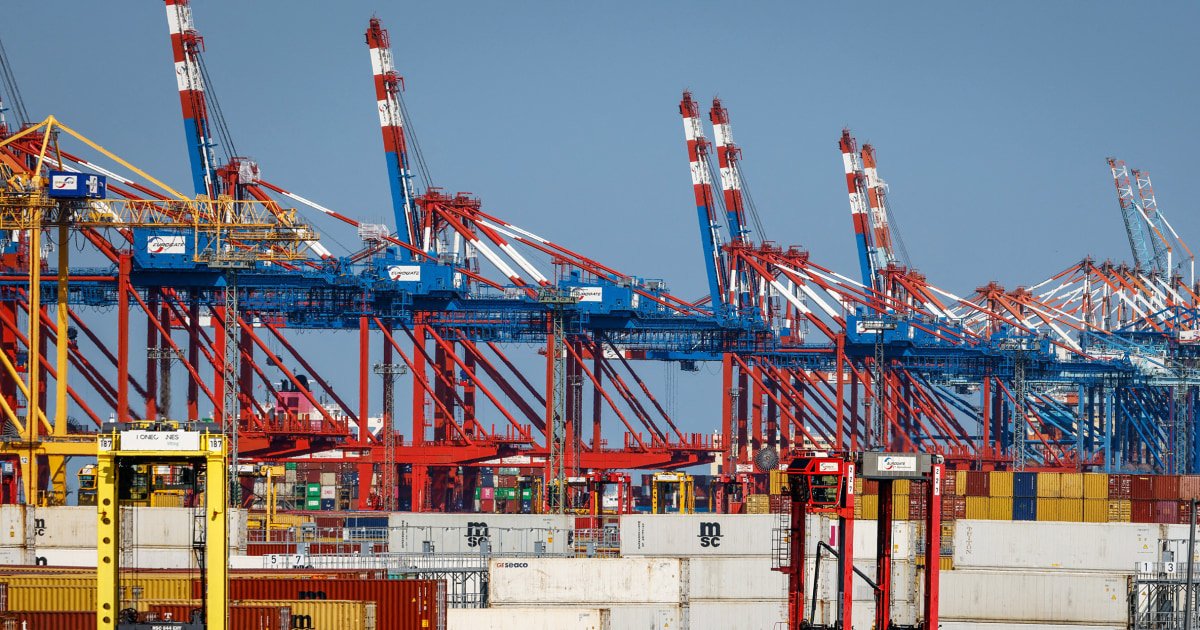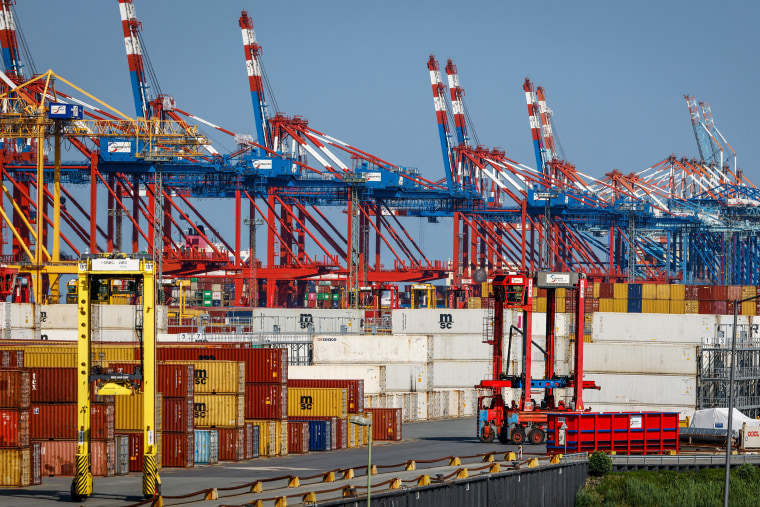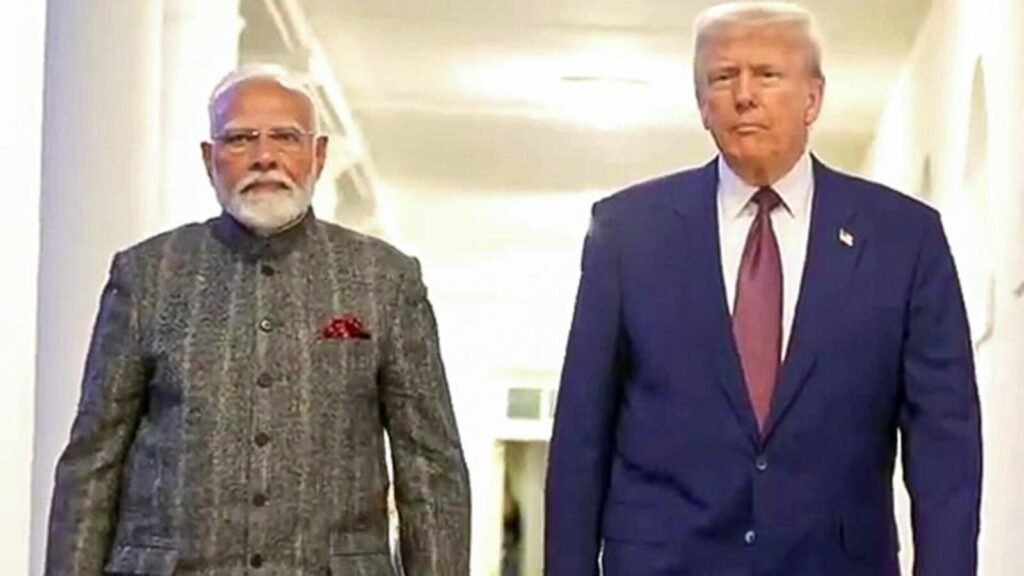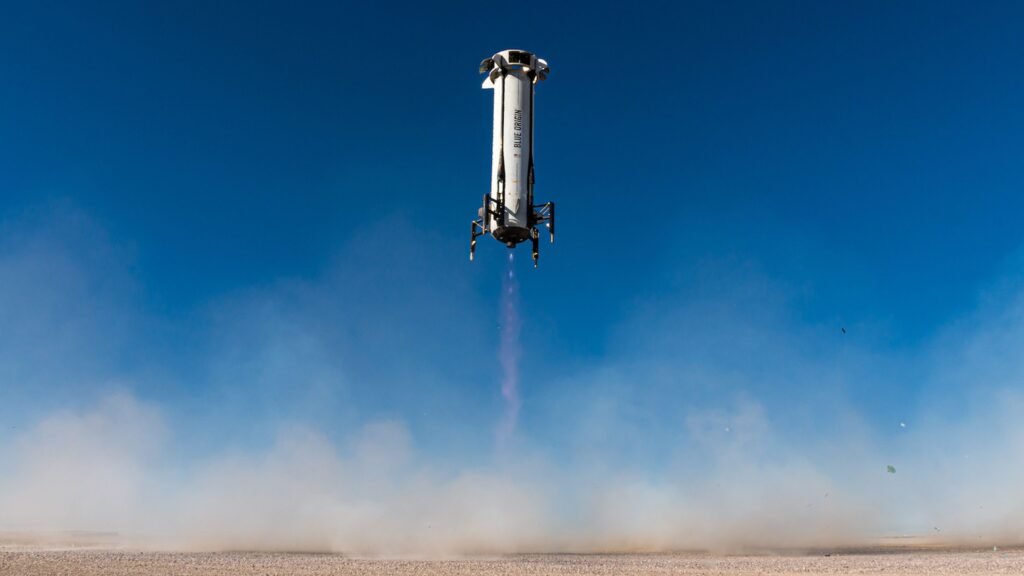Now Reading: Trump reaches agreement with E.U. to impose 15% tariff
-
01
Trump reaches agreement with E.U. to impose 15% tariff
Trump reaches agreement with E.U. to impose 15% tariff

President Donald Trump on Sunday announced a trade agreement with the European Union that would set tariffs at 15%, ending what had been months of uncertainty surrounding trade with the United States’ largest trade partner.
The tariff rate is a reduction from the 30% that Trump threatened on July 12 and the 20% he said he would impose on April 2.
Announcing the agreement, Trump said the E.U. will not impose a tariff on U.S. imports. He added this agreement was “satisfactory to both sides.”

European Commission President Ursula von der Leyen said Sunday alongside Trump that the pact “will bring stability. It will bring predictability. That’s very important for our businesses on both sides of the Atlantic.”
However, Trump said 50% tariffs on steel would remain unchanged and more tariffs could still be on the way for pharmaceutical products, which Ireland is one of the top sources of. Trump recently threatened 200% tariffs on pharma goods.
In the meeting with von der Leyen, Commerce Secretary Howard Lutnick said semiconductor tariffs could also be announced in the coming weeks.
Outlining parts of the agreement, Trump said “the European Union is going to agree to purchase from the United States $750 billion worth of energy.” He said the E.U. would also invest $600 billion into the United States. It was not immediately clear what form that investment would take or over what time period it would be deployed.
Trump added that E.U. nations will also be purchasing “a vast amount of military equipment,” though a definitive purchase amount was not yet set. The European Commission has been bulking up its military supplies but has been focused on buying primarily from European companies so far.
Trump said this arrangement would lead to the “opening up of all of the European countries, which I think I could say were essentially closed.” However, the E.U. buys hundreds of billions of dollars in U.S. goods each year. In 2024, that value was nearly $400 billion.
The agreement appears to closely mirror the trade agreement announced with Japan on Tuesday, under which Japanese imports will face a 15% import duty, which was also lower than Trump earlier threatened.
But last year, the average U.S. tariff on imports from the European Union was just 1.2%, according to Capital Economics’ chief Europe economist.
The European Union has been in active negotiations with Commerce Secretary Howard Lutnick and U.S. Trade Representative Jamieson Greer for weeks and had believed it was extremely close to a deal before Trump suddenly fired off a letter on Truth Social saying he would hike tariffs to 30%. The E.U.’s top trade negotiator made multiple trips across the Atlantic to meet with his U.S. counterparts and was set to speak by phone with Lutnick again Wednesday, according to a spokesperson for the E.U.
“Imposing 30% tariffs on E.U. exports would disrupt essential transatlantic supply chains, to the detriment of businesses, consumers and patients on both sides of the Atlantic,” von der Leyen said after Trump’s July letter.
Immediately after the letter, the E.U. said it would continue working toward an agreement of some type by the new deadline of Aug. 1. But the bloc continued to simultaneously prepare an extensive list of U.S. products against which it could apply retaliatory tariffs if an agreement weren’t reached amid fears that Trump could end talks.
Some of those products included Boeing aircraft, U.S. vehicles and imports from politically sensitive states such as bourbon from Kentucky and soybeans from Louisiana. At the time of the announcement, the E.U. had about $100 billion worth of retaliatory tariffs ready to deploy.
Agricultural and business groups had warned that 30% tariffs on the European Union could dramatically impact the price and availability of wines, cheeses and pasta, and called the proposed levy “incomprehensible.”
Cars and other vehicles produced in the E.U. could still face increased prices. “The costs for our companies have already reached the billions—and with each passing day, the total continues to grow,” the German auto trade group VDA told NBC News in a statement on July 14.
The 27 countries of the European Union are the United States’ largest trading partner — its $605 billion worth of imports into the U.S. surpass Mexico, Canada and even China. The most valuable category of imports in 2024 was drugs and pharmaceuticals primarily from Ireland, followed by autos, aircraft and other heavy machinery from nations such as France and Germany.
Trump has separately threatened to impose a 200% tariff on any drugs imported into the U.S., though it would not be applied for at least 18 months. It was unclear if the deal with the E.U. would prevent that.















































